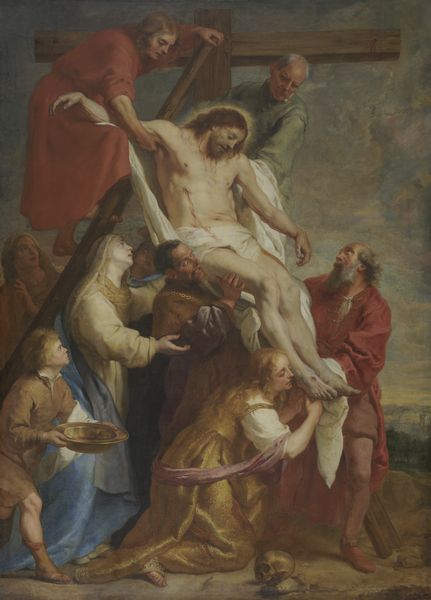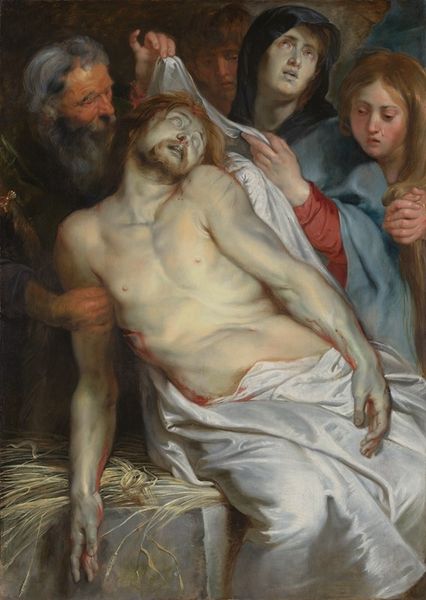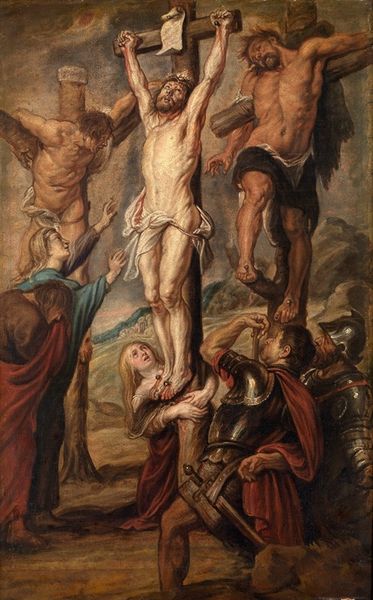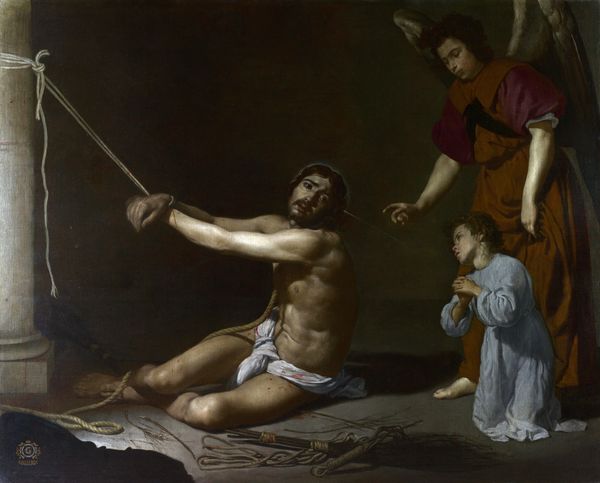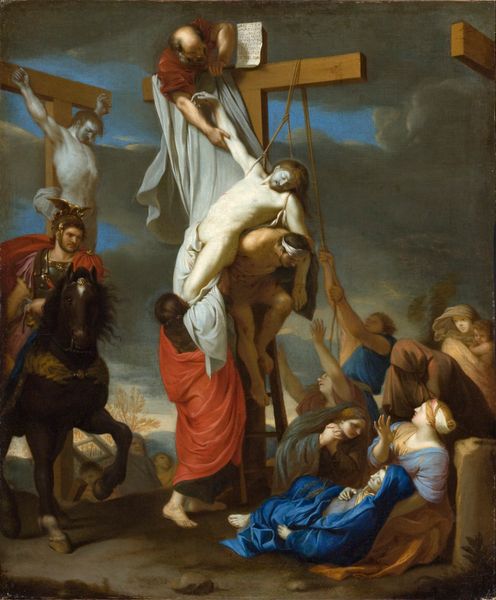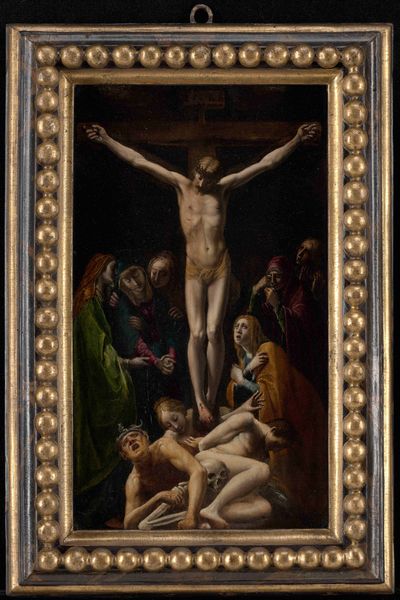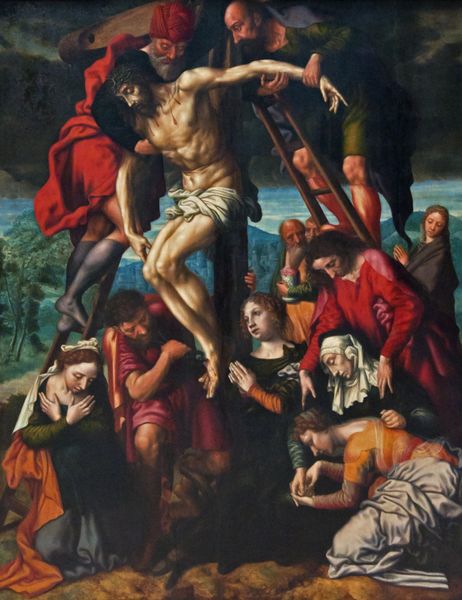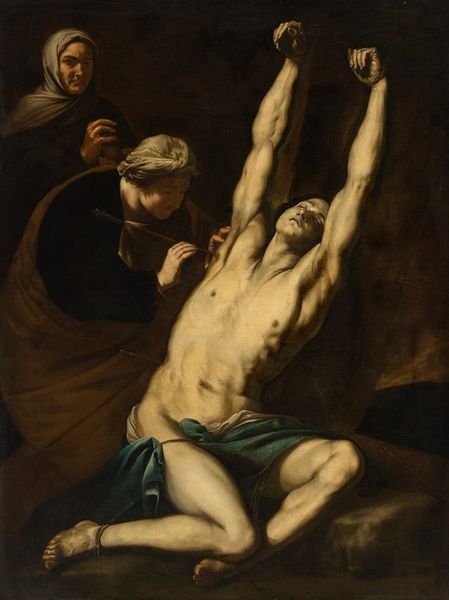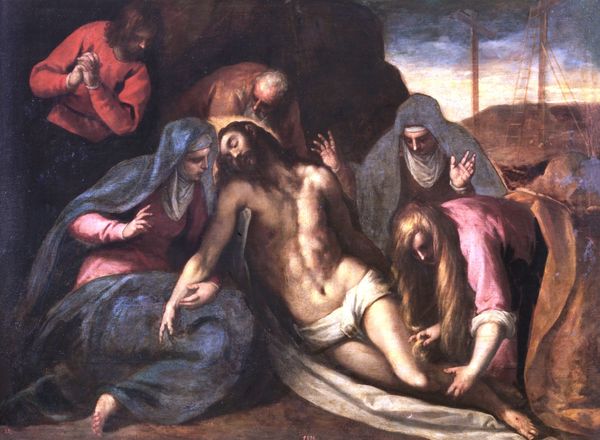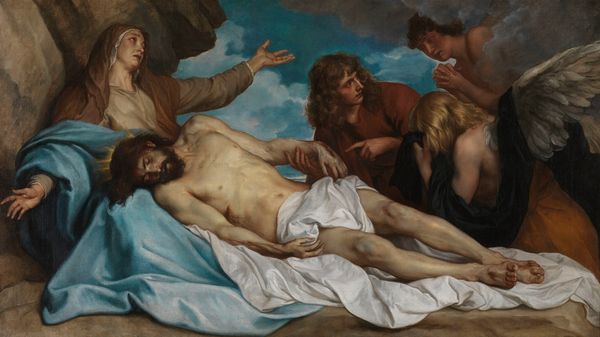
painting, oil-paint
#
portrait
#
baroque
#
painting
#
oil-paint
#
oil painting
#
history-painting
#
portrait art
Dimensions: 165 cm (height) x 108 cm (width) (Netto)
Editor: This is Eugenio Cajés’ "Saint Sebastian," created sometime between 1615 and 1620. It’s an oil painting currently housed in the SMK in Copenhagen. The immediate impression I get is one of dramatic suffering, heightened by the figures witnessing the saint’s martyrdom. What historical context can you give us to better understand this Baroque piece? Curator: This painting is part of a larger cultural obsession with martyrdom, particularly during the Counter-Reformation. The image of Saint Sebastian, riddled with arrows but enduring, became a powerful symbol of resilience and faith under persecution. Consider how this painting, likely commissioned for a church or private devotion, functions as a visual sermon. Editor: So it's not just about religious devotion, but a political statement as well? Curator: Precisely. Think about who Cajés' patrons were and the message they wanted to convey. In an era of religious conflict, images like these reaffirmed Catholic faith and identity in the face of Protestant challenges. Do you see any specific compositional elements that support this? Editor: The upward gaze of the figures below, maybe? And Saint Sebastian himself, he's almost presented as something beautiful even in his agony...like a divine sacrifice? Curator: Exactly. It reflects a Baroque aesthetic that uses intense emotion and dynamic compositions to inspire awe and devotion. The public display of such images served to reinforce the Church's authority and offer solace to believers. Considering the place of worship it would hang in, the theatrical effect could also work as a sort of stage set to engage worshippers. Editor: That is a pretty clever use of artwork. I never thought about Baroque art as anything more than religious paintings but now I realize it goes far beyond that. Curator: Understanding art history isn't just about knowing dates and artists, but also deciphering the complex ways in which art shapes, and is shaped by, the societies that produce it. It is the public facing image, the poster campaign of an era.
Comments
No comments
Be the first to comment and join the conversation on the ultimate creative platform.

